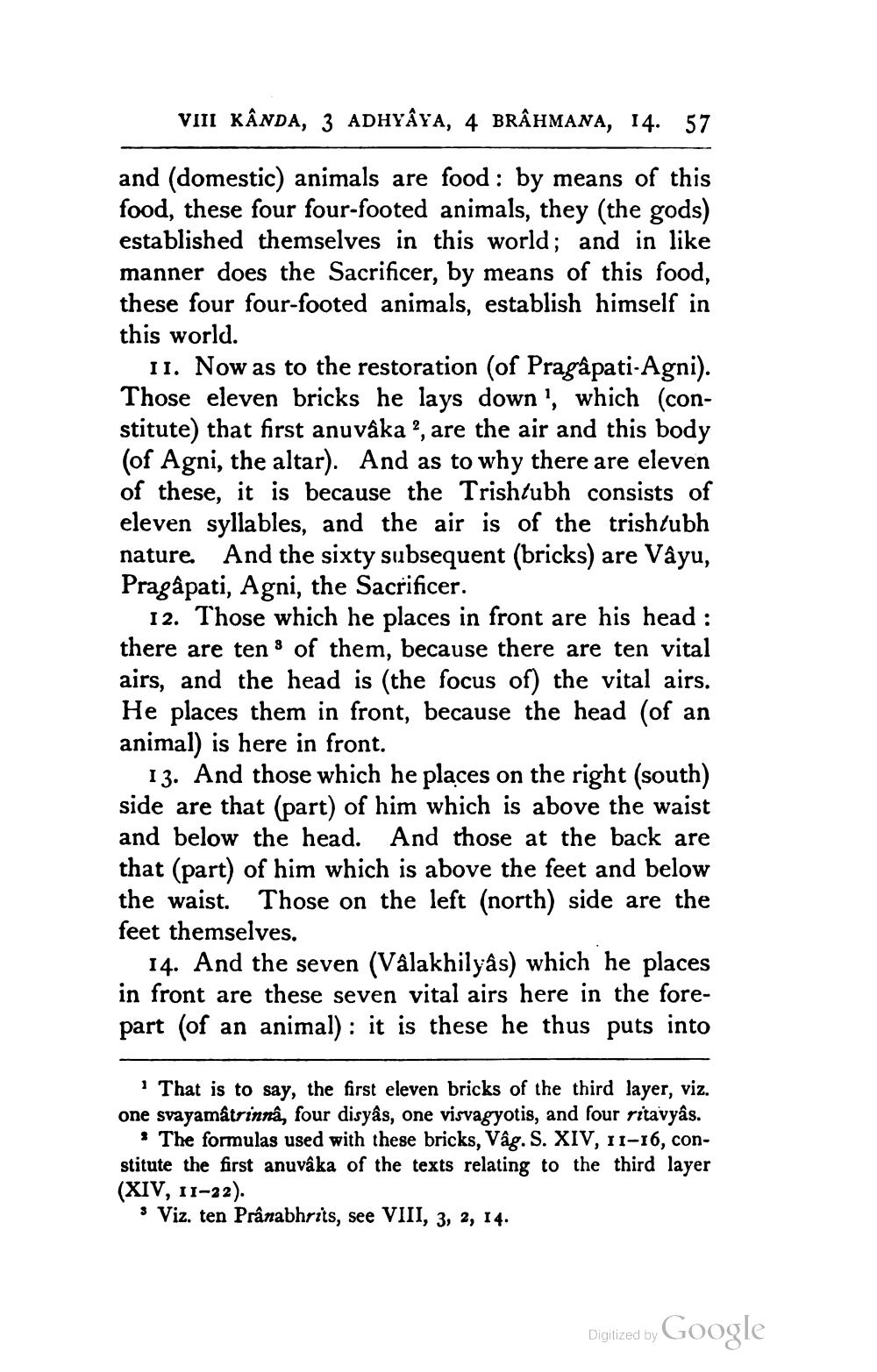________________
VIII KANDA, 3 ADHYAYA, 4 BRAHMANA, 14. 57
and (domestic) animals are food: by means of this food, these four four-footed animals, they (the gods) established themselves in this world; and in like manner does the Sacrificer, by means of this food, these four four-footed animals, establish himself in this world.
II. Now as to the restoration (of Pragâpati-Agni). Those eleven bricks he lays down', which (constitute) that first anuvâka 2, are the air and this body (of Agni, the altar). And as to why there are eleven of these, it is because the Trish/ubh consists of eleven syllables, and the air is of the trishtubh nature. And the sixty subsequent (bricks) are Vâyu, Pragâpati, Agni, the Sacrificer.
12. Those which he places in front are his head : there are ten of them, because there are ten vital airs, and the head is (the focus of) the vital airs. He places them in front, because the head (of an animal) is here in front.
13. And those which he places on the right (south) side are that (part) of him which is above the waist and below the head. And those at the back are that (part) of him which is above the feet and below the waist. Those on the left (north) side are the feet themselves.
14. And the seven (Vâlakhilyâs) which he places in front are these seven vital airs here in the forepart (of an animal): it is these he thus puts into
'That is to say, the first eleven bricks of the third layer, viz. one svayamâtrinnâ, four disyâs, one visvagyotis, and four ritavyâs.
The formulas used with these bricks, Vâg. S. XIV, 11-16, constitute the first anuvâka of the texts relating to the third layer (XIV, 11-22).
3 Viz. ten Prânabhrits, see VIII, 3, 2, 14.
Digitized by
Google




